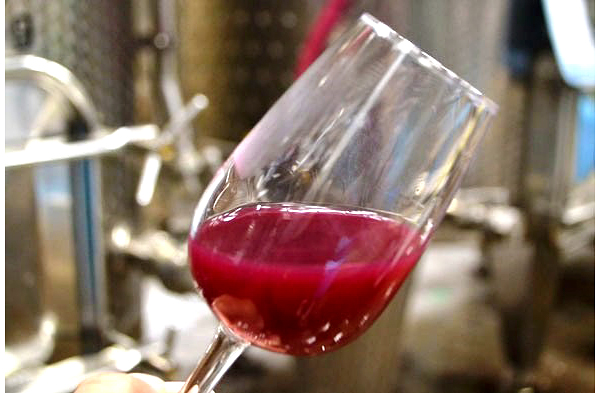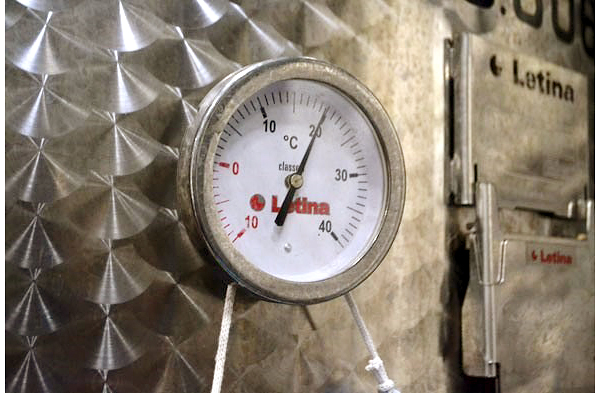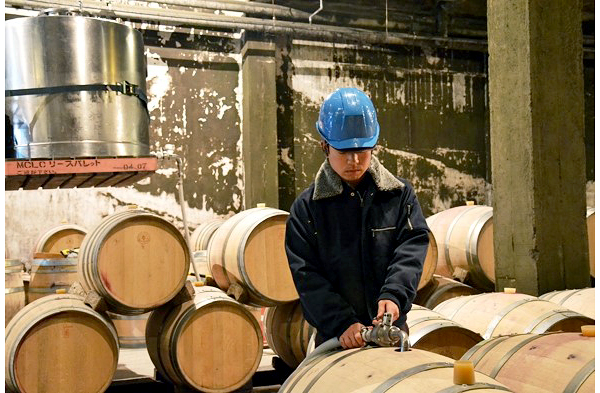Jan. 12, 2017
SUNTORY TOMI NO OKA WINERY "From the Site of Viticulture"―Malo-lactic Fermentation of Red Wine
TOMI NO OKA WINERY utilizes malo-lactic fermentation to make its red wines and some of its white wines. In malo-lactic fermentation, the malic acid in the wine is converted by lactic acid bacteria into lactic acid and carbon dioxide.

Two major purposes of malo-lactic fermentation
The first purpose is to change the wine’s flavor. Malo-lactic fermentation transforms malic acid, which has a pronounced sourness, into soft, mild-tasting lactic acid. This gives the wine a softer, smoother, and mellower flavor. The malo-lactic fermentation process also gives rise to a range of fragrances and increases the complexity of tastes.
The second purpose is to stabilize the wine’s quality. Malic acid is prone to being consumed by microbes, so conversion into lactic acid, which is not often consumed by microbes, allows for stable aging. The lactic acid also uses amino acids and other nutrients in the wine to inhibit microorganisms.
TOMI NO OKA WINERY chooses from the many types of lactic acid bacteria used in malo-lactic fermentation according to the condition of wine being produced.

Mornings and evenings are extremely cold at this winery from late November.
For this reason, the wine is put in temperature-controlled cellars or lukewarm water is piped around the outside of stainless-steel tanks to increase the wine’s liquid temperature and facilitate malo-lactic fermentation. After this fermentation is complete, different types of red wine are produced by aging some of the red wine in tanks and some in barrels. In this way, TOMI NO OKA WINERY will continue making wines with such special care. It’s all for good wines.


Related Links
・Suntory Japanese Wine
